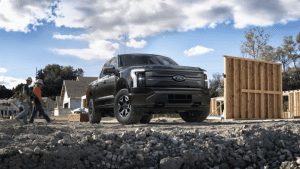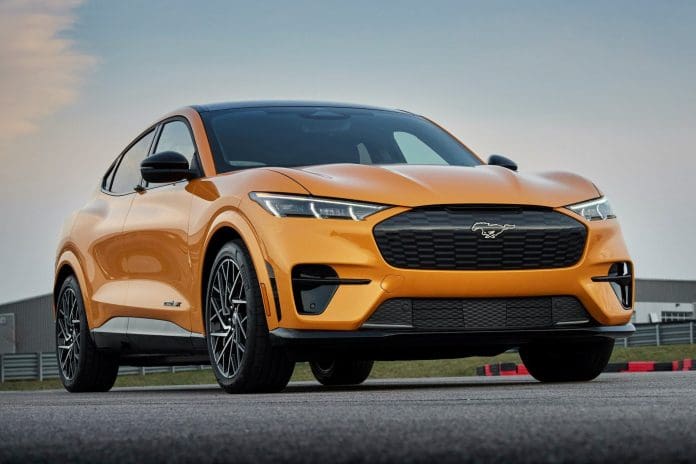On Friday, Ford Motor Company (Ford) CEO Jim Farley entertained the idea of separating the company’s growing electric vehicle (EV) business from its internal combustion engine (ICE) business. The announcement comes just weeks after Farley received questions from analysts on the company’s Q4 2021 earnings conference call about whether Ford would consider managing the two businesses separately. “But I will go back to something we said, and I’ve said over and over again, which is running a successful ICE business and the successful EV business are not the same,” said Farley on the Q4 2021 conference call. “The customers are different. We think the go-to market is going to have to be different. The product development process and the kinds of products we develop are different. The procurement supply chain are all different. The talent is different. The level of in-sourcing is different. And the rhythm of the business is fundamentally different. So, I’m not going to talk about speculation in the press, but I will tell you that the way we’re operating the businesses acknowledges those differences. And I’m really excited about the company’s commitment to operate the businesses as they should be.”
Major Differences Between An EV Business And An ICE Business
Although Ford has more than a century of experience mass producing and selling automobiles, it recognizes that running a successful EV business is different than a legacy ICE business. There are different suppliers and a different procurement process. There’s the challenge of either buying batteries or building your own. How much of the technology and the manufacturing process should be propriety and how much should be outsourced? Is a company going to build its own EV charging network like Tesla or rely on third parties?
Financing is also completely different. Tesla, Lucid Group, and Rivian Automotive have little to no debt, and have instead relied on equity markets for financing, whereas Ford typically relies on debt markets. In a rising interest rate environment, Ford may be more interested in spinning off the EV business and then selling a portion of that equity to fund future growth. Since Tesla’s stock price fetches a premium over its competitors, the company also has little problem raising more cash if it needs it. This is less of a problem now that Tesla is consistently profitable. But it’s a nice card to have in its back pocket if it ever needs it.
Finally, the distribution process is different. Tesla, Lucid Group, and Rivian Automotive deploy a direct-to-consumer model that bypasses the traditional dealership framework. If the brand is strong and demand is high, this strategy can boost profit margins and give the company more control over its customer base. Ford could consider using the dealership model with its ICE business and the direct-to-consumer strategy with its EV business.
Product Improvements
During the Ford Q4 2021 conference call, Ford discussed the differences in product roll-out with ICE vs. EVs. With ICE, the company makes minor updates each year to its existing models. With EVs, the company believes that the largest strides will be made after the first edition model as advancements in technology and battery efficiency quickly make older technology outdated. “I’m struck throughout my career, I’m struck at how different the rhythm of this digital [battery electric vehicle] EV businesses versus ICE,” said Farley. “We all grew up in a business where you kind of launched the vehicle and then you work on a minor change or a next model. I certainly grew up in that model.”
“And what we’re finding with ICE, thank goodness, we’re scaling now because what we’re finding in Mach-E is that actually, most of the exciting work starts after Job 1. That’s when the over-the-airs [OTAs] really make a customer impact. But on the cost side and the profit side, I guess, we have learned so much about the lack of integration in our engineering operations as we compared our engineering on Mach-E to others that are best-in-class. And we are finding lots of profit opportunities as we get after that integration between engineering, supply chain, and manufacturing, even within engineering. If I showed you our cooling system for Mach-E, it has four motors, probably needs to be two. It has 60 or 70 hoses, probably needs to be one-third of that. And those are the opportunities we’re going after. And we are not going to wait for next year.”
“We’re not going to wait for a minor change. We are going to reengineer that vehicle now and then use that expertise for Lightning, E-Transit, and, of course, our all-electric platforms. And I’m really excited about this opportunity. Being in the industry as long as I have, I haven’t felt this chance to take out so much cost after Job 1, both from the customers’ use of the vehicle off the data, as well as actually all these integration opportunities. And the other thing is the vehicles are much simpler than we thought. The F-150 has one cab, one box. And we — for the same kind of ICE offering, it’s like 40 configurations. So, they’re much simpler. We’re at the very beginning of this journey, and it’s already very exciting on the profit improvement. I haven’t seen this kind of opportunity in the past in my career.”
The Largest Strategic Pivot In Company History
During its Q4 2021 earnings call, Ford said it plans to increase its EV production capacity to 600,000 units by 2023. The company reiterated that it is on track to begin highly anticipated F-150 Lightning deliveries this spring, as well as break ground on its US$11.4 billion Blue Oval City EV and battery production campus in the first half of this year.
Ford sold just over 27,000 of its Mustang Mach-E electric SUVs in 2021, making it the second-highest EV company by sales in the United States behind Tesla. But reservations for the Ford F-150 Lightning, Mach-E, and its E-Transit electric van currently stand at more than 275,000. Ford plans to produce more than 100,000 Mach-Es in 2022, barring supply chain challenges.

Ford expects commodity price headwinds due to inflation and the ongoing semiconductor challenge will inflict US$1.5 billion and US$2 billion in added costs this year. Yet the company is confident it can overcome challenges as it improves its supply chain and better understands the differences between its traditional ICE business and its EV business.
“Perhaps the biggest gift for all the pain we’re going through now in semiconductors is that we have very painfully learned the lesson that we cannot manage the supply chain for these key components as we have,” said Farley on the company’s Q4 2021 conference call. “In fact, you could argue that in the transition to these digital EVs, supply chain could be one of the biggest advantages a particular company has or doesn’t have.”
Ford sold nearly 4 million cars in 2021, just over 2 million of which were sold in the United States. North America was the company’s only profitable region in 2021, but a major redesign should allow Ford to achieve widespread profitability in the years to come. The company expects at least 40% of its 2030 revenue to come from EVs.
In addition to ramping production of the F-150 Lightning and Mach-E, 2022 will mark Ford’s first full year of production for the Ford Bronco and the Ford Maverick. Unlike other pure-play EV companies, Ford believes that its ICE business can continue to grow and provide extra free cash flow that can be used to accelerate its EV investments and solidify Ford as the market leader in the electric pickup truck market.

















